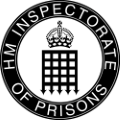Harmondsworth Immigration Removal Centre: drugs, despair and decrepit conditions
Inspectors returning to Harmondsworth IRC found the worst conditions they have seen in immigration detention.
Much of the accommodation was decrepit, violence and other unacceptable behaviour such as drug use had substantially increased and there had been numerous serious attempts at suicide in the centre.
The Chief Inspector of Prisons, Charlie Taylor was so concerned that he wrote to the then Home Secretary shortly after the inspection setting out the many failures at the centre. He has received no response.
Population pressures in prisons meant far more former prisoners were being held in Harmondsworth alongside those with no criminal conviction. Assaults had doubled since the last inspection and drug-taking, usually rare in IRCs, was now widespread. Inspectors could smell cannabis and saw detainees openly smoking in communal areas without being challenged by staff who largely kept to offices with “do not enter” taped across their doors. Perhaps unsurprisingly, nearly two thirds of those detained in Harmondsworth said they had felt unsafe in the centre.
Adding to this atmosphere, the centre had doubled up cells so they could hold more men and the only exceptions to this were for those at risk of serious harm. After two days, men who refused to share a room were taken to the separation unit by a team dressed in full personal protective equipment and kept there until they agreed to share.
Almost half of those who completed the inspectorate’s survey said they were suicidal and the centre held many men with known vulnerabilities, including 20 whom the Home Office had accepted would be likely to suffer harm from ongoing detention. Despite this obvious risk, and numerous serious suicide attempts, the centre had not implemented repeated recommendations from ‘near-miss’ investigations, including such basic steps as the removal of ligature points. Self-harm prevention work was generally poor: one man, who had been placed on constant watch because he was assessed to be at imminent risk of self-harm, was being watched by no one.
One of the challenges faced by the centre, run by Mitie Care and Custody, was a staffing shortfall and a shambolic retendering process run by the Home Office, which meant that leaders had no idea whether they would still be running the centre in the next few months. These contractual uncertainties had gone on since the previous year and made it all but impossible to recruit permanent senior staff, who might only be in post for a matter of weeks.
The new director had a good understanding of the many challenges faced by the centre and was beginning to make progress in improving the treatment of detainees. She will need strong and consistent support at every level to succeed.
Notes to editors
- A copy of the full report, published on 9 July 2024, can be found on the HM Inspectorate of Prisons website at: Harmondsworth Immigration Removal Centre – HM Inspectorate of Prisons (justiceinspectorates.gov.uk)
- This inspection took place between 12-29 February 2024. The report was originally due to be published on 11 June but was delayed due to the general election.
- Harmondsworth immigration removal centre is located near Heathrow. There were 454 detainees at Harmondsworth at the time of inspection.
- The average length of detention at Harmondsworth was at least 75 days and the longest continuous period of detention was 753 days.
- 20 detainees were assessed as being at the highest level of the Home Office Adults at Risk policy.
- Only a third of those held at Harmondsworth were, on average, deported. At least 60% of detainees leaving the centre were released into the community.
- HM Inspectorate of Prisons is an independent inspectorate, inspecting places of detention to report on conditions and treatment and promote positive outcomes for those detained and the public.
- Please email media@hmiprisons.gov.uk if you would like more information.
